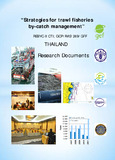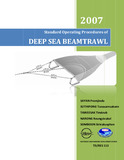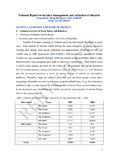Overview of The Trawl Fisheries Socio-Economic Conditions in Indonesia After The 2nd Trawl Ban
Share
| dc.date.accessioned | 2019-10-18T07:51:26Z | |
| dc.date.available | 2019-10-18T07:51:26Z | |
| dc.date.issued | 2016 | |
| dc.identifier.citation | Overview of The Trawl Fisheries Socio-Economic Conditions in Indonesia After The 2nd Trawl Ban. (2016). Indonesia. | |
| dc.identifier.uri | http://hdl.handle.net/20.500.12067/994 | |
| dc.description | This paper gives an overview of the socio-economic impact on the communities affected by the implementation of governmental policy on trawl banning in Indonesia. It has been written based on data from the Indonesia Shrimp Catching Entrepreneurs Association (HPPI) and explanations of experts and actors in particular fishers who operate trawl vessels. It is generally known that bottom trawling operates on and touches the bottom and thereby directly disturbs the seabed habitats and benthos. This has been a serious concern. Indonesia has various types of trawlers from small and medium to large scale. Over the years modifications of different components in the trawl gears were made and different local names for these gears were given. In Aru and Arafura Sea, trawlers permitted by the government have been largely industrial-scale fish and shrimp trawlers. The license fee paid each year has been calculated based on the size of fishing vessels (GT) multiplied by the potential productivity of fishing gear and multiplied by the benchmark prices of fish and the percentage of business scale. The percentage of business scale is grouped into small-scale fisheries (5%), medium scale fisheries (10%) and large-scale fisheries (25%). Shrimp produced in these fisheries is exported to various countries such as Japan, USA, Australia, the EU, Thailand and Taiwan Province of China. Trawl fishery has contributed greatly to the economy and the state revenue through the export and earning from foreign exchange. The prohibition of trawling since 9 January 2015 has resulted in a gradual cessation of shrimp trawling in Aru-Arafura Sea. The trawlers have not yet been able to find alternative and adequate shrimp fishing technique. Some alternative fishing gears have been tried but they have not been in tune with the capacity of these high-power ex-trawlers. Nonetheless, in response to the government's policy on trawl ban, the attempt has been to maintain the business continuity. The trawler companies have sought to reduce operating costs by reducing operating days and cutting crew costs. Prosessing units are experiencing serious idle capacity and currently are largely relying only on supply from the smaller fishing ports located around the region. The production base is very weak but can still maintain limited trade relations with overseas buyers. A potential positive impact of the trawling ban has been that small-scale fishers are now able to catch fish more easily, closer to the beaches, and the volume of catch per fisher has been increasing. The small-scale fishermen, however, need support in distribution and marketing their catches. Poor infrastructure in the fishing villages has become an obstacle in maintaining the quality of catch, and is also an obstacle for effective fish distribution. Provision of ice and coolbox has become a very important intervention to keep the catch fresh until it reaches a shelter in a cold storage. | en |
| dc.language.iso | en | en |
| dc.subject | trawl fisheries | en |
| dc.subject | socio-economic | |
| dc.subject | Indonesia | |
| dc.subject | trawl banning | |
| dc.subject | REBYC II CTI | |
| dc.title | Overview of The Trawl Fisheries Socio-Economic Conditions in Indonesia After The 2nd Trawl Ban | en |
| dc.type | Technical Report | en |
| dc.contributor.corporateauthor | Prepared by Endroyono National Project Coordinator REBYC-II CTI Indonesia | en |
このアイテムのファイル
このアイテムは次のコレクションに所属しています
-
Country Activities [95]




